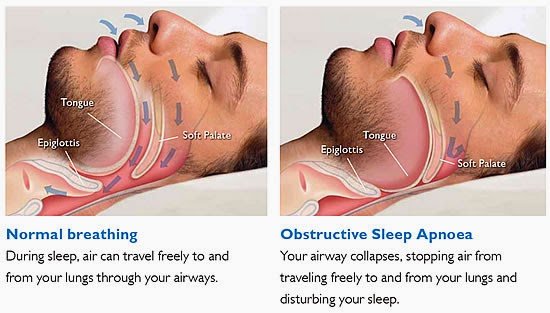OSA: Causes, Symptoms, and Effective Treatments
OSA (Obstructive Sleep Apnea) is a common sleep disorder where the airway becomes blocked during sleep, causing breathing interruptions. These pauses can occur repeatedly throughout the night, resulting in poor sleep quality and potential health risks. Identifying OSA early and seeking treatment can significantly improve your sleep and overall well-being.
What is OSA?
OSA occurs when the muscles at the back of the throat relax excessively during sleep, leading to a temporary blockage of the airway. This results in loud snoring, disrupted breathing, and frequent awakenings throughout the night. Each breathing pause can last anywhere from a few seconds to a minute, often happening many times in one night.
Symptoms of OSA
Recognizing the symptoms of OSA is crucial for timely intervention. Common signs include:
- Loud snoring
- Gasping or choking during sleep
- Excessive daytime sleepiness
- Morning headaches
- Difficulty concentrating or memory issues
- Irritability or mood changes
If you or a loved one experience these symptoms, seeking medical advice is important for proper diagnosis and treatment.
Causes and Risk Factors for OSA
Certain factors increase the likelihood of developing OSA, including:
- Obesity: Excess weight, especially around the neck, can obstruct the airway.
- Age: OSA becomes more common as people age.
- Gender: Men are more likely to develop OSA than women.
- Family history: Genetics may play a role in the development of the condition.
- Lifestyle habits: Alcohol use, smoking, and sedatives can exacerbate airway obstruction.
How is OSA Diagnosed?
To diagnose OSA, a doctor will typically perform a sleep study (also known as polysomnography). During this overnight test, various factors like breathing patterns, heart rate, and brain activity are monitored to detect interruptions in breathing. In some cases, home sleep tests may also be used to gather relevant data.
Treatment Options for OSA
The treatment of OSA depends on the severity of the condition. Some common treatment options include:
1. CPAP Therapy
Continuous Positive Airway Pressure (CPAP) is the most common and effective treatment for OSA. A CPAP machine provides a constant flow of air through a mask, helping to keep the airway open during sleep.
Explore CPAP machines and accessories at CPAP Pros.
2. Lifestyle Changes
- Weight loss can reduce airway obstruction and alleviate symptoms.
- Avoid alcohol or sedatives before bed, as they relax throat muscles.
- Sleep position changes (e.g., sleeping on your side) can help prevent airway collapse.
3. Oral Appliances
For mild to moderate OSA, a dentist may recommend custom oral devices that reposition the lower jaw and tongue to keep the airway open.
4. Surgery
In severe cases of OSA, surgical options may be considered. These could include:
- Removing excess tissue from the throat
- Repositioning the jaw to improve airway flow
- Correcting nasal obstructions
The Importance of Treating OSA
If left untreated, OSA can lead to serious health complications, including:
- Heart disease
- High blood pressure
- Stroke
- Type 2 diabetes
- Depression
Seeking treatment for OSA is crucial to avoid these risks and ensure better sleep quality, mood stability, and overall health.
Conclusion: Taking Control of OSA
If you suspect you have OSA, don’t delay in seeking a diagnosis. Early intervention can significantly improve sleep quality and reduce health risks. CPAP therapy, lifestyle changes, and in some cases, surgical treatment, can help manage OSA effectively.
Visit CPAP Pros to explore CPAP solutions and receive expert guidance on managing OSA and improving your quality of sleep. Take the first step toward better health today.


Recent Comments